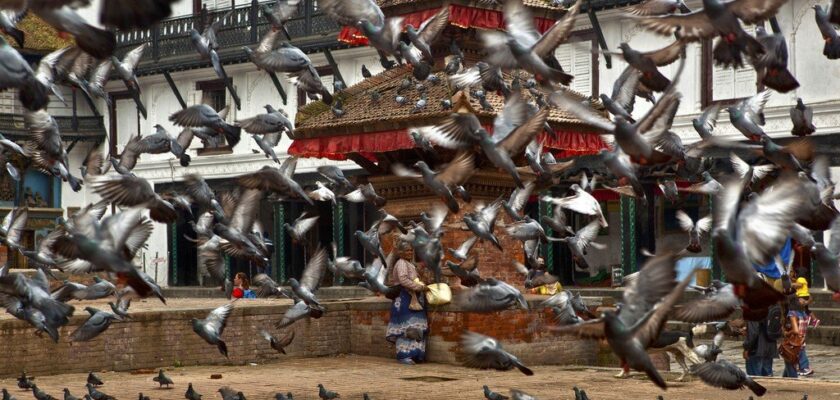Durbar Square in Kathmandu
Durbar Square in Kathmandu is the social, cultural, historical and religious center of the city, declared a World Heritage Site by UNESCO in 1979. The most impressive architectural structures are located in this part of Kathmandu.
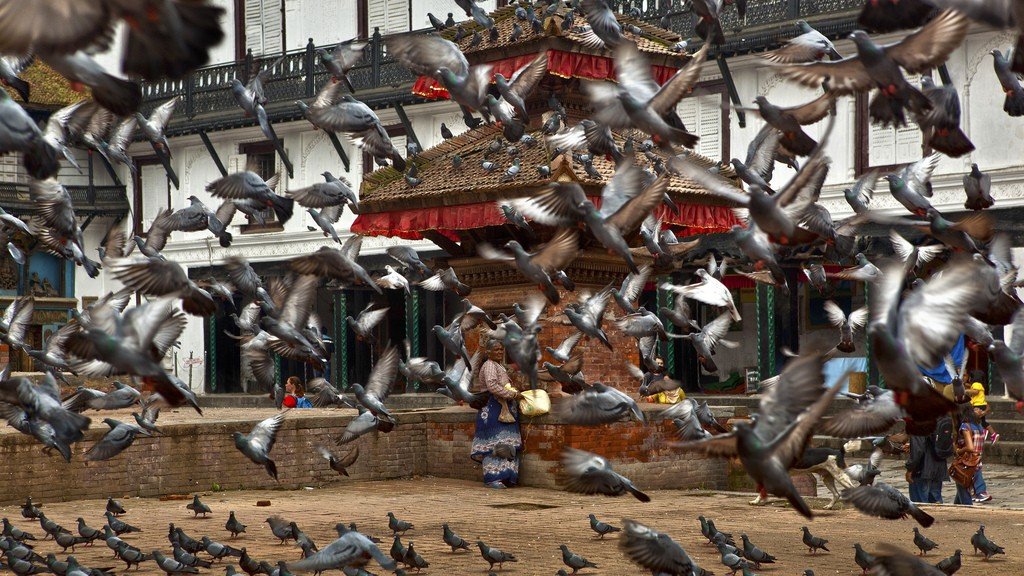
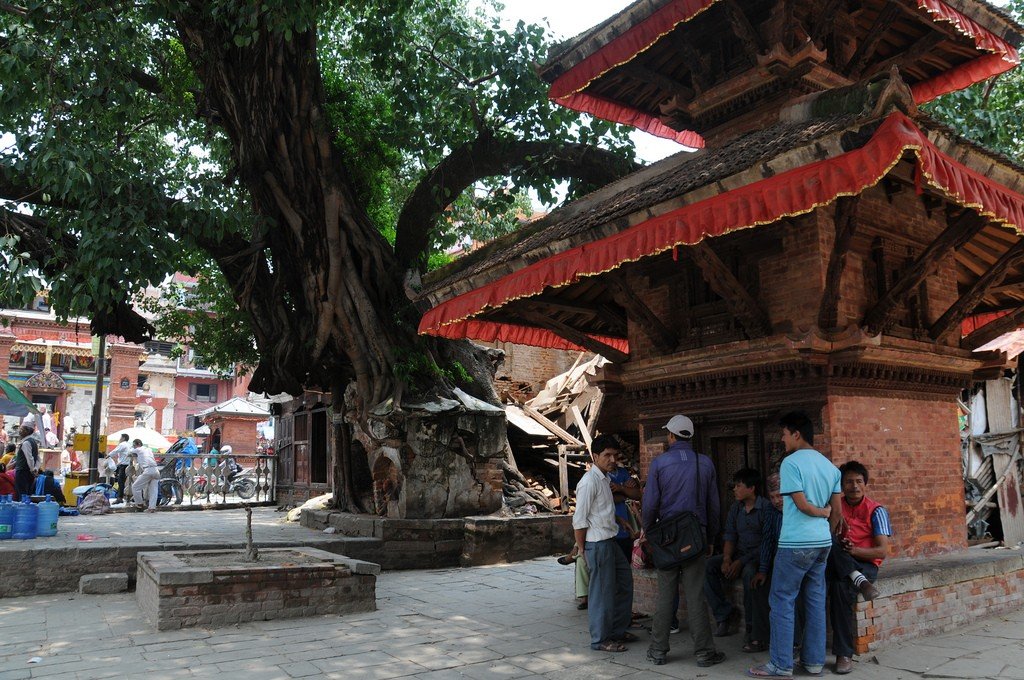
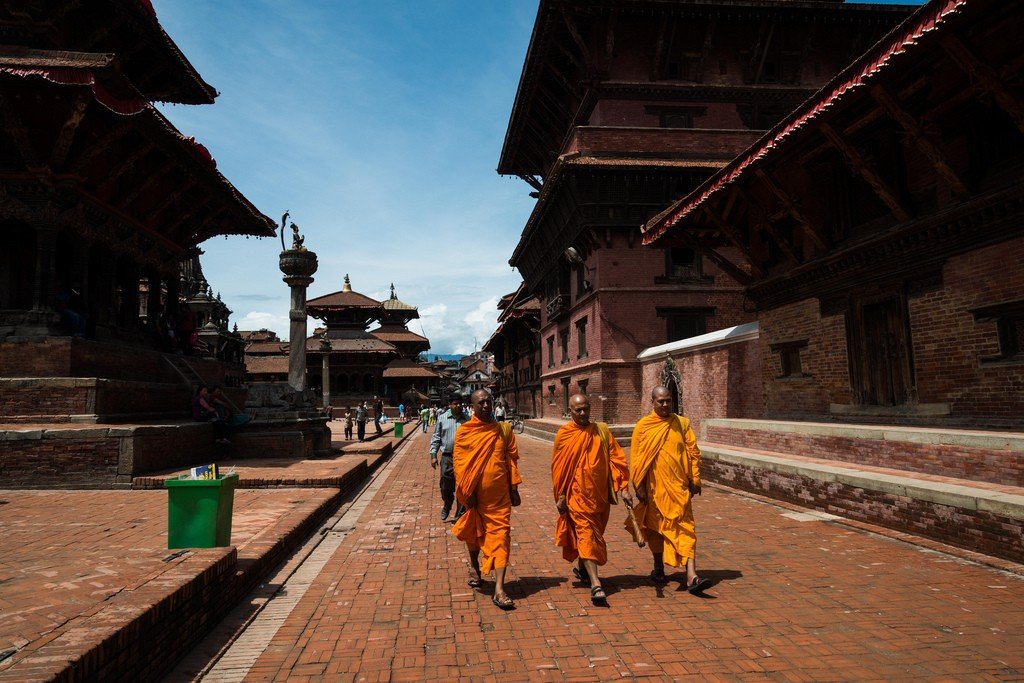
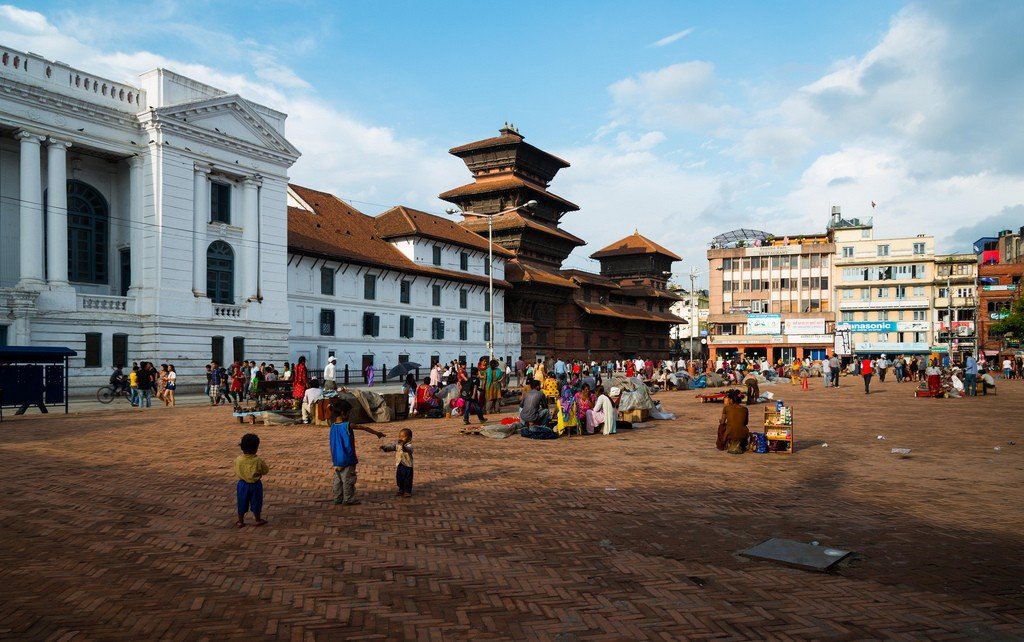
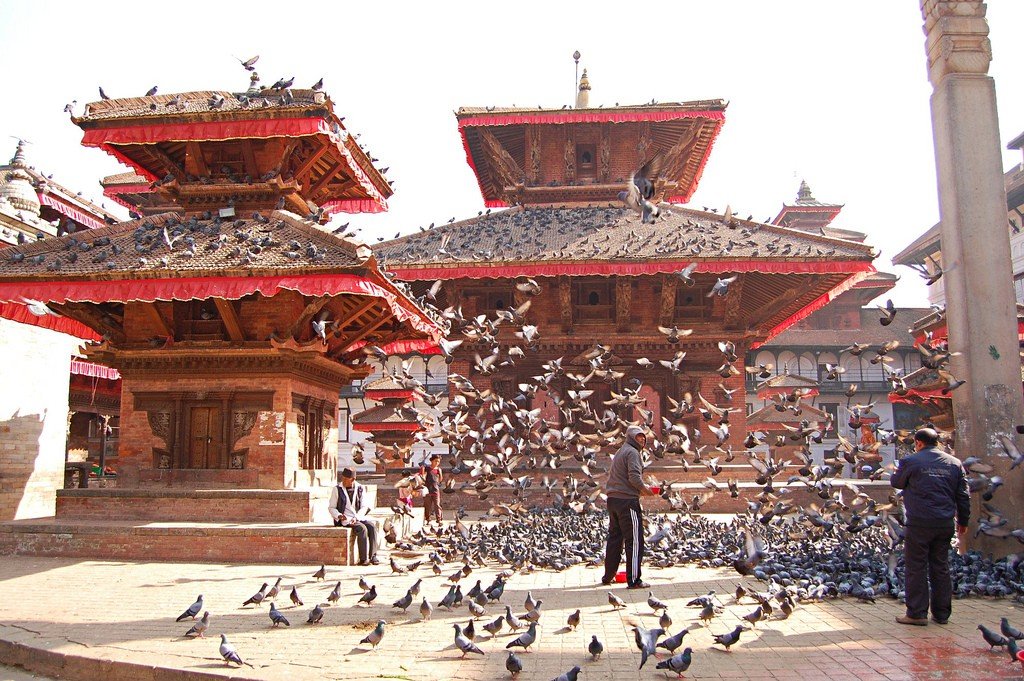
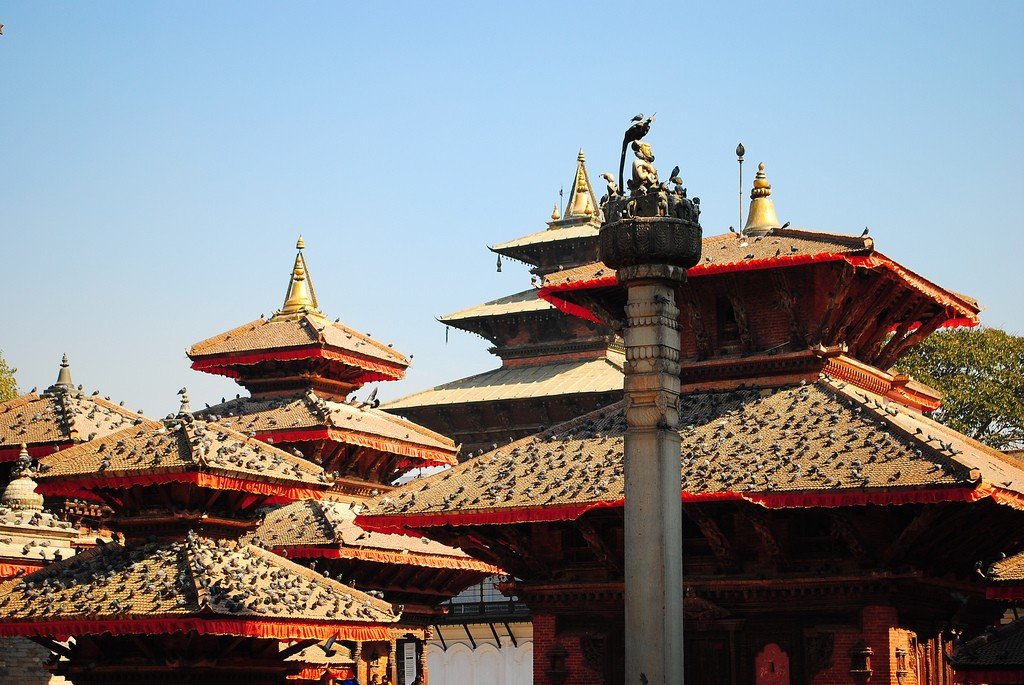
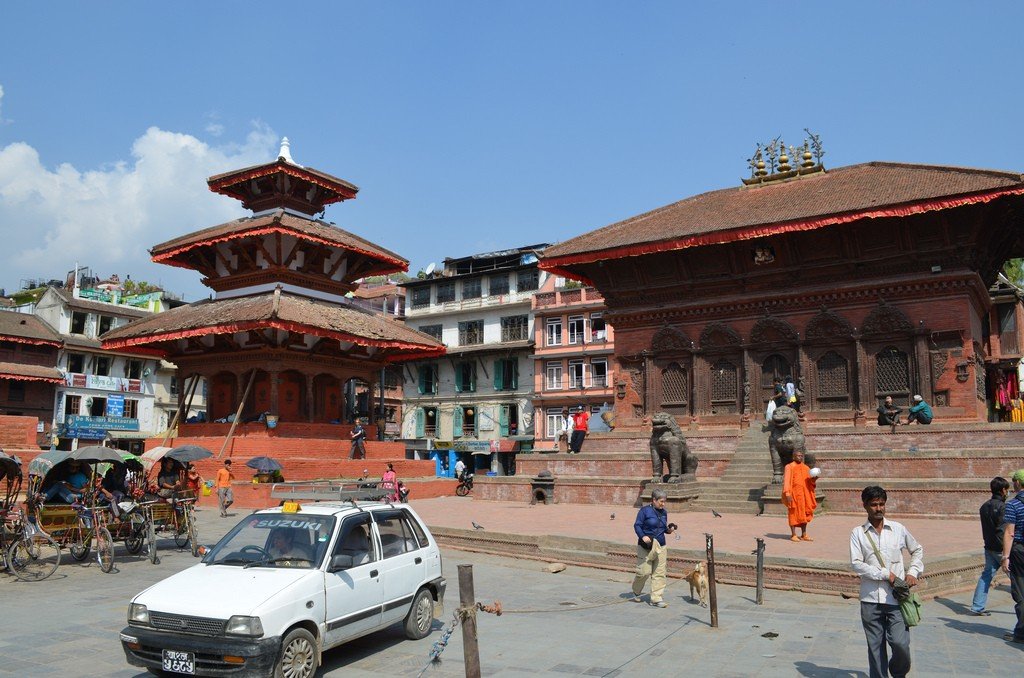
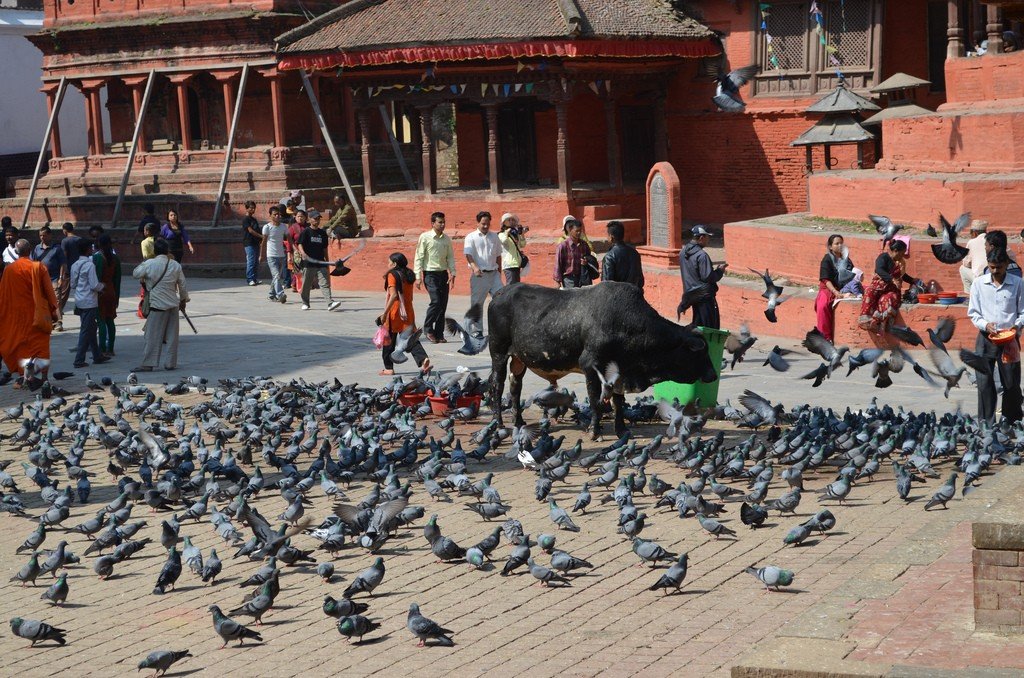
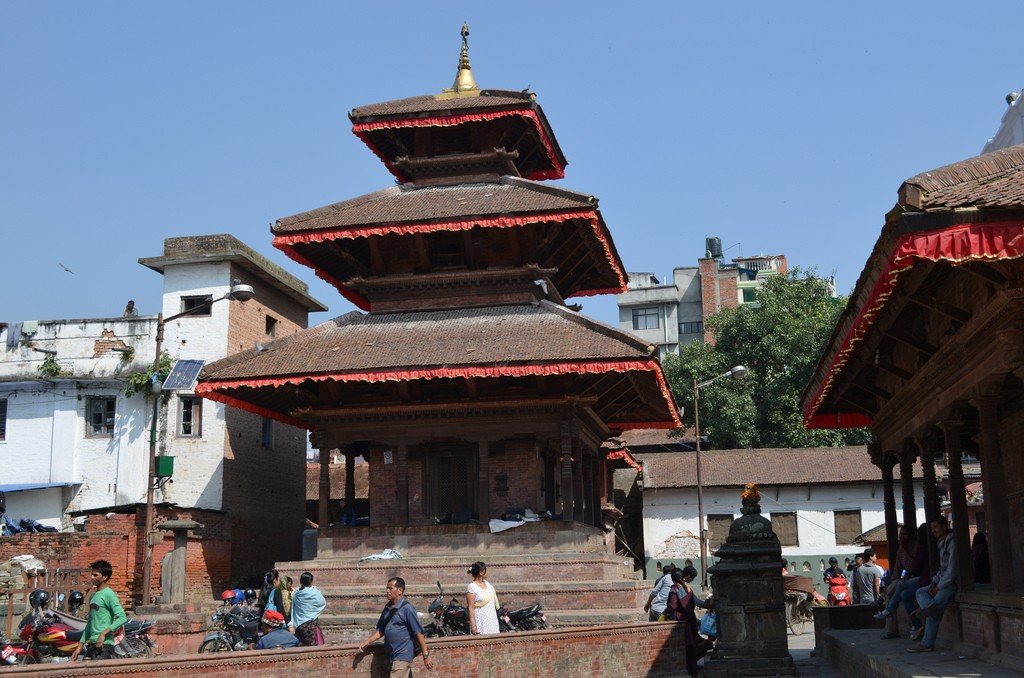
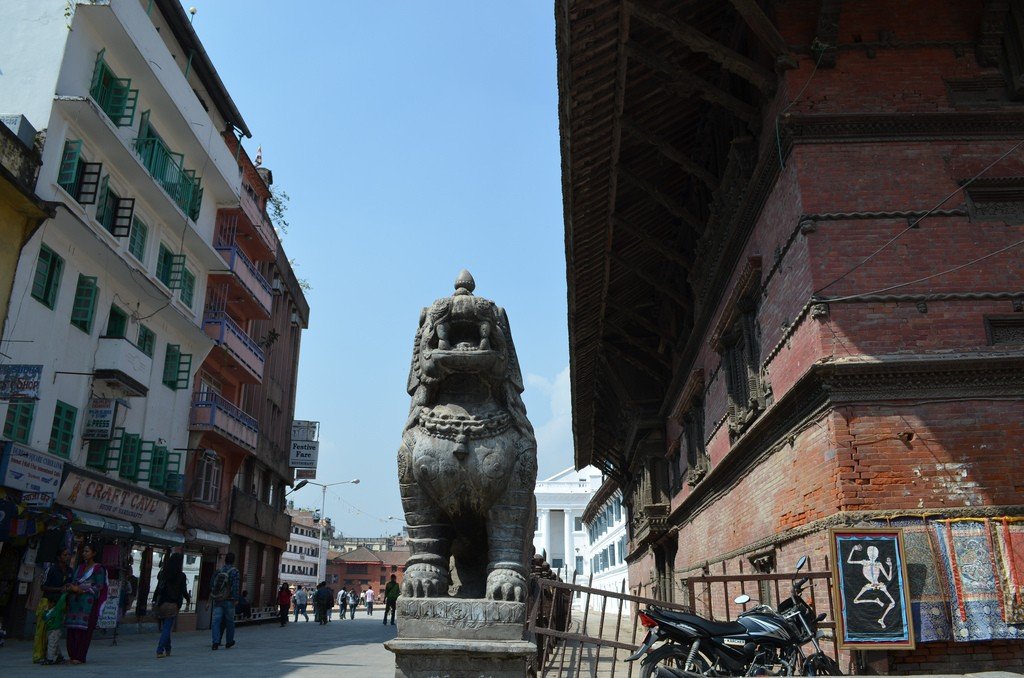
Highlights
Durbar Square is a whole complex of historical buildings, Buddhist and Hindu temples, palaces, courtyards that were built between the 12th and 18th centuries. Coronations of Nepalese kings, various religious processions and festivals were held here. Unfortunately, in 1934, many architectural monuments were destroyed, then restored, but not all managed to preserve the original appearance.
.
The area of Durbar Square is made up of three adjacent squares. Its southern part is Basantapur Square with its many souvenir vendors. The western and northeastern part, connecting to the entrance of Hanuman Dhoka Palace and several temples, is Durbar Square, while the northern part is Makhan Tol, seamlessly transitioning into the street of the same name, which used to be the main road of the city.
.Durbar Square Attractions
Ashok Binayak Temple (Maru Ganesh)
This small gilded temple is one of the most important temples dedicated to Ganesha and is located north of Kastamandap. It is not known how old this temple is, having last been restored in the 19th century.
Maju Deval
On a nine-stage platform stands the Shiva temple of Maju Deval, dating back to 1690. Famous for its wood carvings depicting erotic scenes, it was built by the mother of Bhupatindra Malla, the king of Bhaktapur. The famous Shivalingam is installed in the temple. Near the temple stairs, on the eastern side, is a small temple of Kam Dev (Kama), the god of love and desire.
.Trailokya Mohan Narayan
Trilokya Mohan Narayan is a majestic pagoda temple dedicated to Vishnu, rising in the square in front of the palace of Goddess Kumari (Kumari Bahal). At its western side on a stepped plinth sits Garuda, the king of birds, the storm of the Nagas, (according to the Puranas, a companion of Vishnu), installed by the consort of King Prithvibendra Malla soon after his death.
.Shiva Parvati Temple
The entrance to the Shiva Parvati Temple, located a few meters away from Maju Devala, is guarded by stone lions. Carved out of wood, the greatest of the gods and his consort look out of the temple window at their devotees. The temple was built in the late 18th century by Bahadur Shah, son of Prithvi Narayan Shah.
.Kumari Bahal (Palace of Goddess Kumari)
In Durbar Square, opposite the Traylokya Mohan Narayan Temple, is a three-story red brick structure with incredibly intricate, skillful carvings on the windows. This is the Kumari Bahal (house of the living goddess Kumari). The building was built in the style of a Buddhist vihar (a shelter for Buddhist pilgrims or a monk’s dwelling, usually two stories high, with an open courtyard in the center) in 1757 by King Jaya Prakash Malloy. The inner sides of the building form a courtyard called Kumari Chowk. Surrounded by magnificent carved balconies and windows, the courtyard is perhaps one of the most beautiful not only in Kathmandu but also in Nepal. Its entrance is open only to Hindus. Outside the large gate, to the right of the Kumari Bahal, is the huge chariot on which the goddess Kumari is carried around the city every year during the Indra Yatra festival.
.Gaddhi Baithak
Gaddhi Baithak is a neoclassical building built in 1908, during the Rana dynasty, it was used as a hall for state receptions.
.Bhagwati Temple
Bhagwati Temple, located near Gaddhi Baithak, was built by King Jagat Jaya Malla as a shrine to the god Narayana. But in 1766, the murti (deity) was stolen. In 1768, after Prithvi Narayan Shah’s conquest of the Kathmandu Valley, the deity of Goddess Bhagavati, an incarnation of Durga, whose cult of worship came to Nepal from southern India, was installed in the temple.
.Krishna Temple
This octagonal temple was built by King Pratap Malla in 1648, believed to be in response to the magnificent Krishna temple in Patan built by Siddhinarsingh Malla, King of Patan. The temple features a Krishna deity and two goddesses who, according to a Sanskrit inscription, were created in the likeness of the king and his two wives.
.Seto Bhairav
The huge mask-face of the White Bhairava dates back to 1794, the reign of Rana Bahadur Shah, the third king of the Shah dynasty. The gate behind which the mask is hidden is opened for a few days in September, during the annual Indra Yatra festival.
.Jagannath Temple
Jagannath Temple is the oldest temple at the northern end of Durbar Square. It is famous for the erotic carvings on the supports of its roof.
Degutaleju Temple
Degutaleju Temple, a three-storied pagoda temple that is part of Hanuman Dhoki, was built by King Shiva Sing Malla. Degutaleju is a different manifestation of Goddess Taleju, the patroness of the Malla royal dynasty.
.Kala Bhairav
Behind the Jagannath temple is a figure (statue) of Kala Bhairava, a six-armed deity wearing a necklace of human skulls, trampling a demon with his feet. The deity represents the destructive incarnation of Shiva. According to the existing belief, whoever lies in front of this statue will immediately bleed to death. Dated from the 6th to the 7th century AD.
.Indrapur Temple
East of Kala Bhairava stands the mysterious Indrapur Temple, whose history of appearance is unknown. Recently restored, it may be one of the oldest religious structures not only in the Kathmandu Valley but also in Nepal. Inside the temple is the Shivalingam. A Garuda deity stands on the south side, but the name of the temple indicates that it is dedicated to the god Indra.
.Kakeshwar Temple
Kakeshwar Temple was built in 1681, but like many other buildings has been reconstructed many times. In 1934, it was severely damaged after a devastating earthquake. The temple combines various combinations of styles, from the Nevari style at the bottom, to the Indian Shikhara style at the top, and the top of the spire is shaped like a kalash, a water vessel.
.Kotilingeshwar Mahadev Temple
Kotilingeshwar Mahadev is a towering temple of the god Shiva built on a three-stage base in the 15th century during the reign of King Mahendra Malla.
.Mahendreshwar Temple
Mahendreshwar – The Shiva Temple, located at the northern end of Durbar Square, was built in 1561 by King Mahendra Malla. The temple stands on a broad two-tiered plinth. A golden umbrella rises above its spire. A small Nandi bull deity is placed in front of the temple, and a Kam Dev (Kama) deity is placed in the northeast corner.
.Taleju Temple
Taleju Temple is a most magnificent structure located on the northeastern edge of the square, open only to Hindus, during the brief period of the annual Dasain festival. The temple was erected in 1504 by King Mahendra Malla. The cult of worshiping the goddess Taleju Bhavani (patroness of the Malla royal dynasty) came to Nepal from southern India. Temples were also built in her honor in Patan and Bhaktapur. The temple stands on a twelve-stage base and towers over 35 meters, dominating the entire Durbar Square.
.The Great Bell
North of the Shiva Parvati temple rises a bell installed in 1797 by Rana Bahadur Shah (son of Prithvi Narayan Shah). The ringing of the bell can be heard only during the puja (temple ceremony) held at Degutaleju temple.
.King Pratap Malla’s Column
In the pigeon-filled Durbar Square near the Jagannath Temple stands a stone column known as Pratap Dhwaja. On it stands a statue of the famous king Pratap Malla (1641-1674), seated with folded palms surrounded by his two wives and five sons. His gaze is directed towards his private quarters on the upper floor of the Degutaleju temple. The column was installed in 1670 by Pratap Malla and was the predecessor of similar columns in Patan and Bhaktapur.
.Basantapur Tower (Kathmandu Tower)
During the Malla dynasty, the Nasal Chowk court was the place of coronation. The ceremony was performed in its center on a special ritual platform. This custom was followed till the Maoists came to power. The last king of Nepal, Gyanendra, was crowned here in 2001. At the southern end of the courtyard rises the nine-story Basantapur Pagoda Tower (or Kathmandu Tower). The wooden struts along the facade of the tower supporting its main roof, especially those facing Basantapur Square, are decorated with wood carvings depicting erotic scenes. The tower offers an excellent view of Hanuman Dhoka Palace and the city.
.Festivals
Apart from the magnificent temples and shrines, another interesting attraction of Durbar is the various festivals during which the people of the city gather in this square and celebrate their age-old traditions.
.